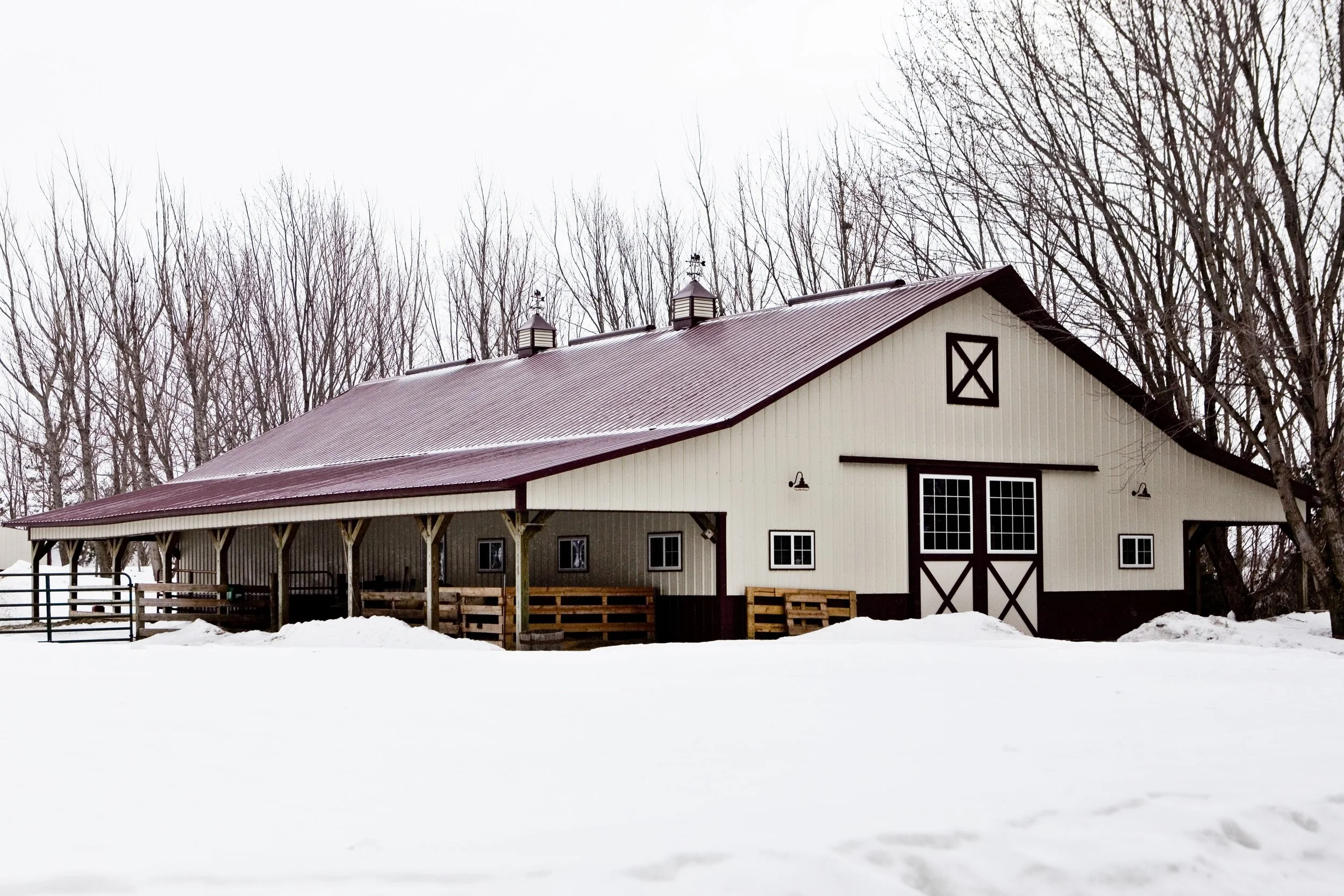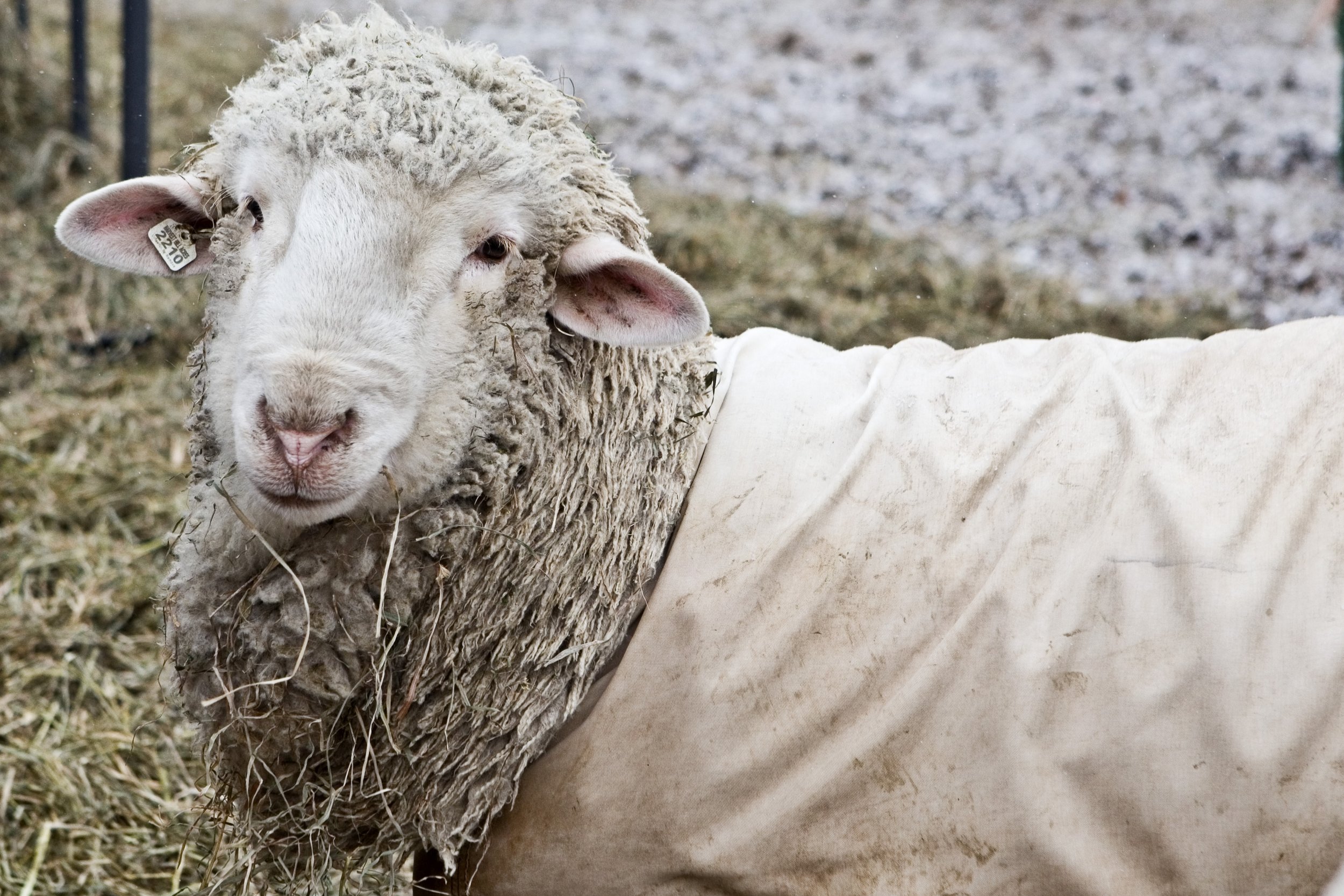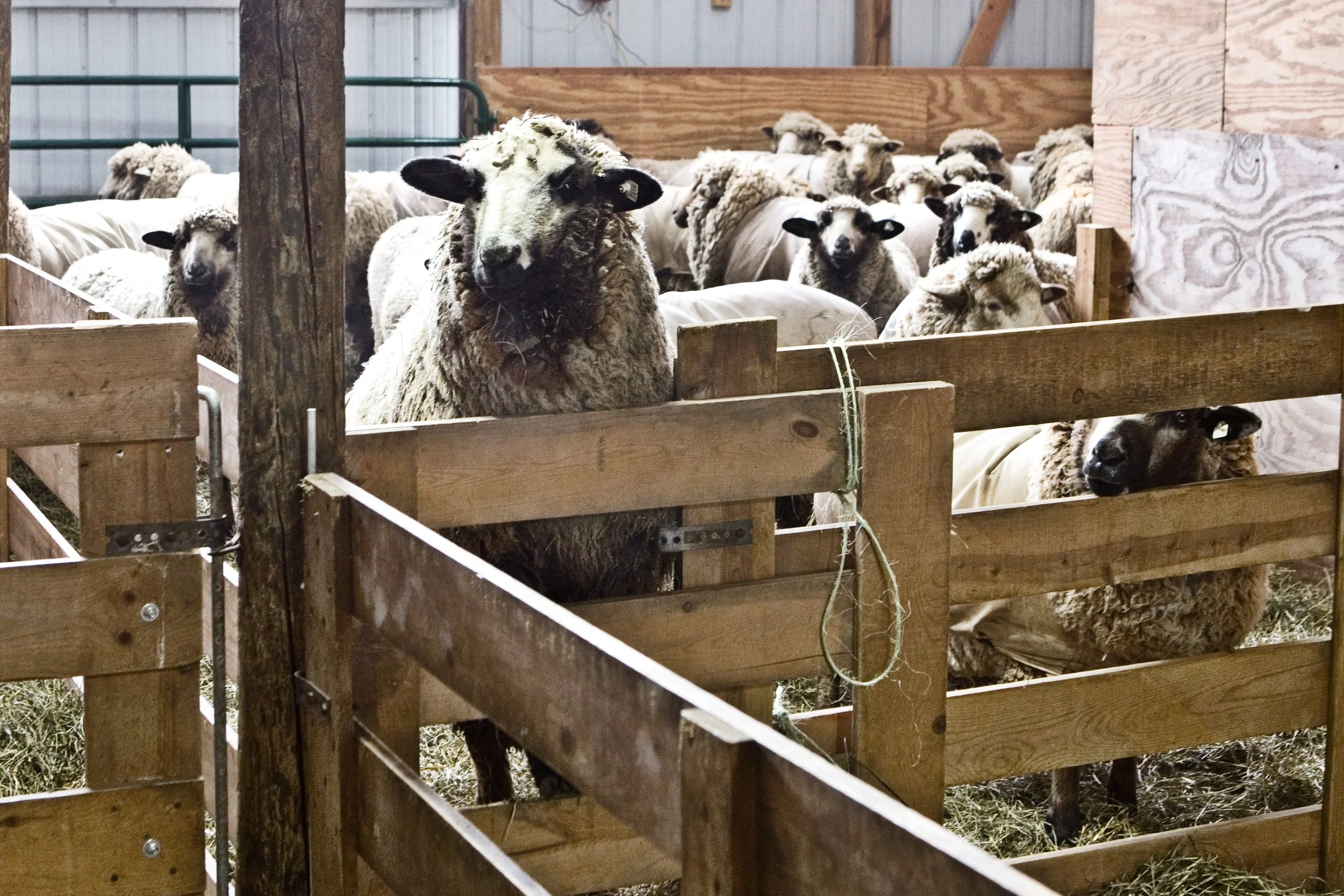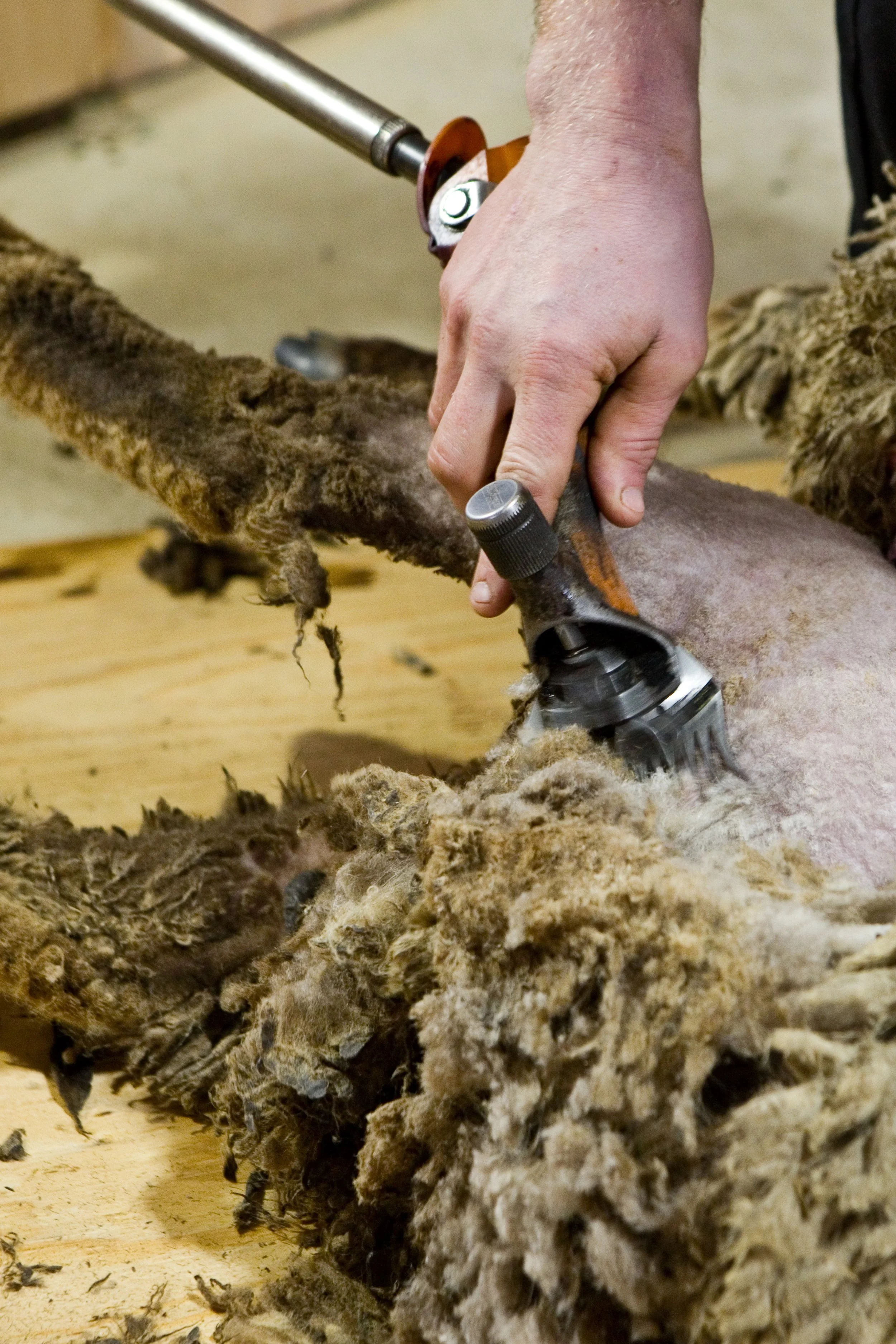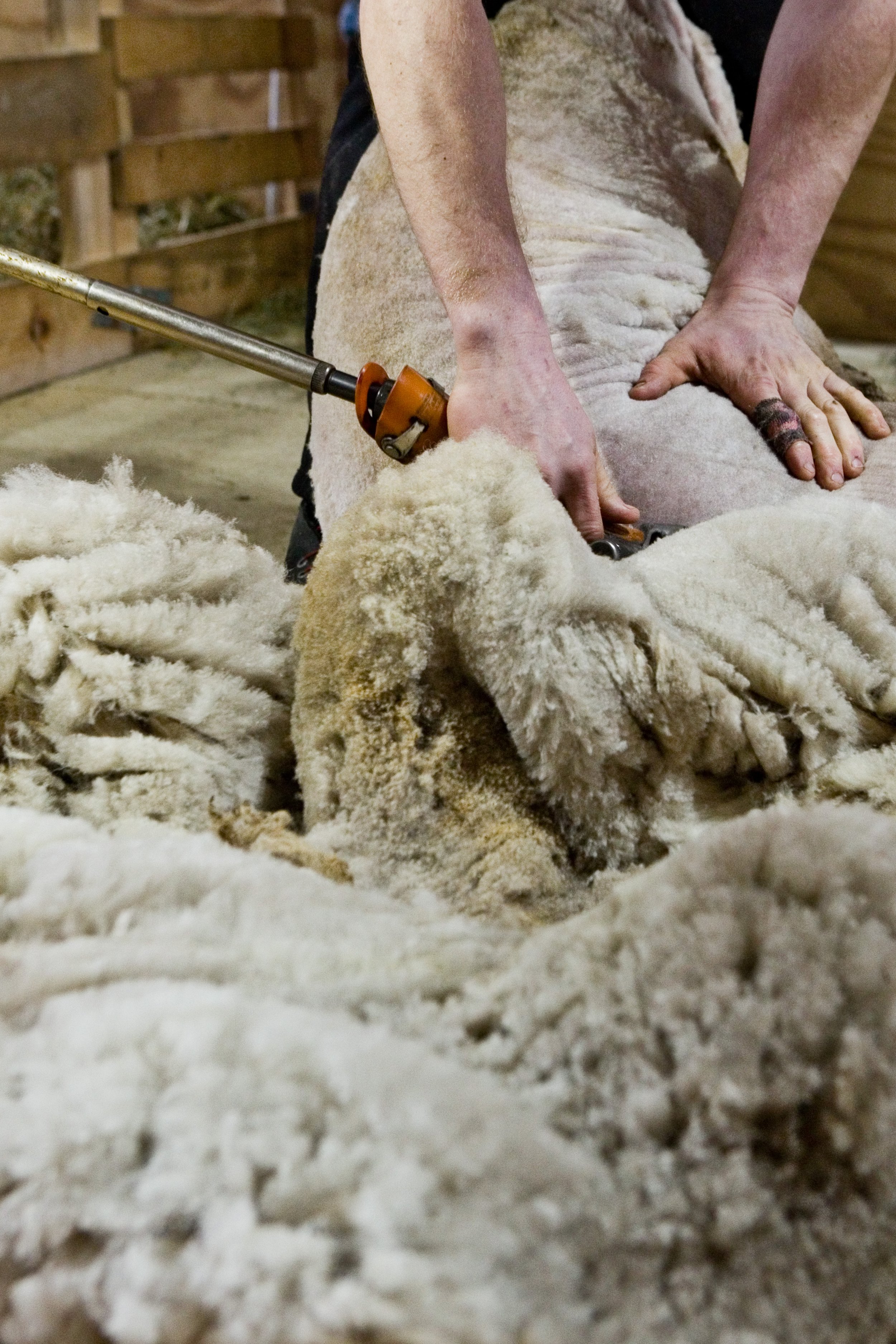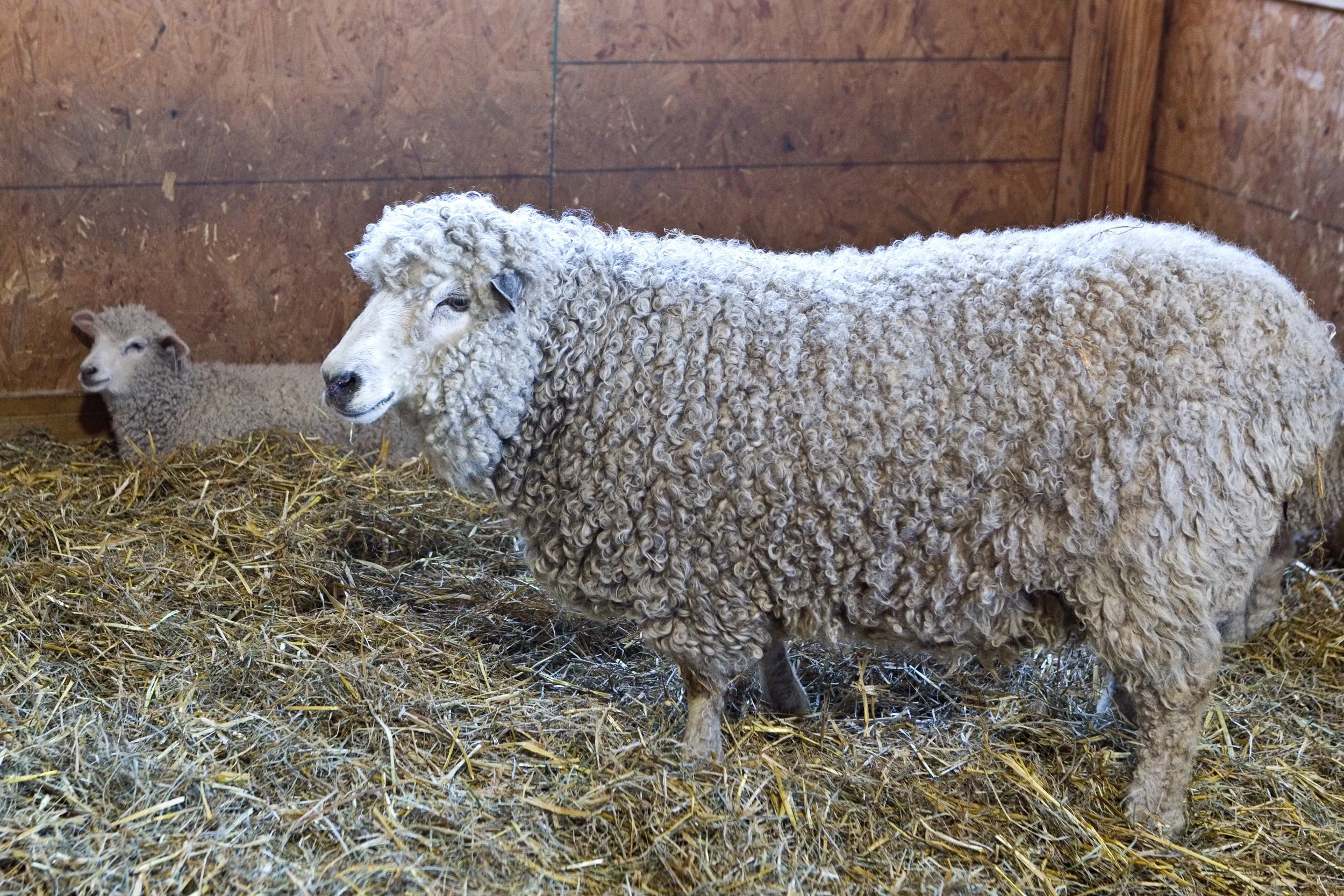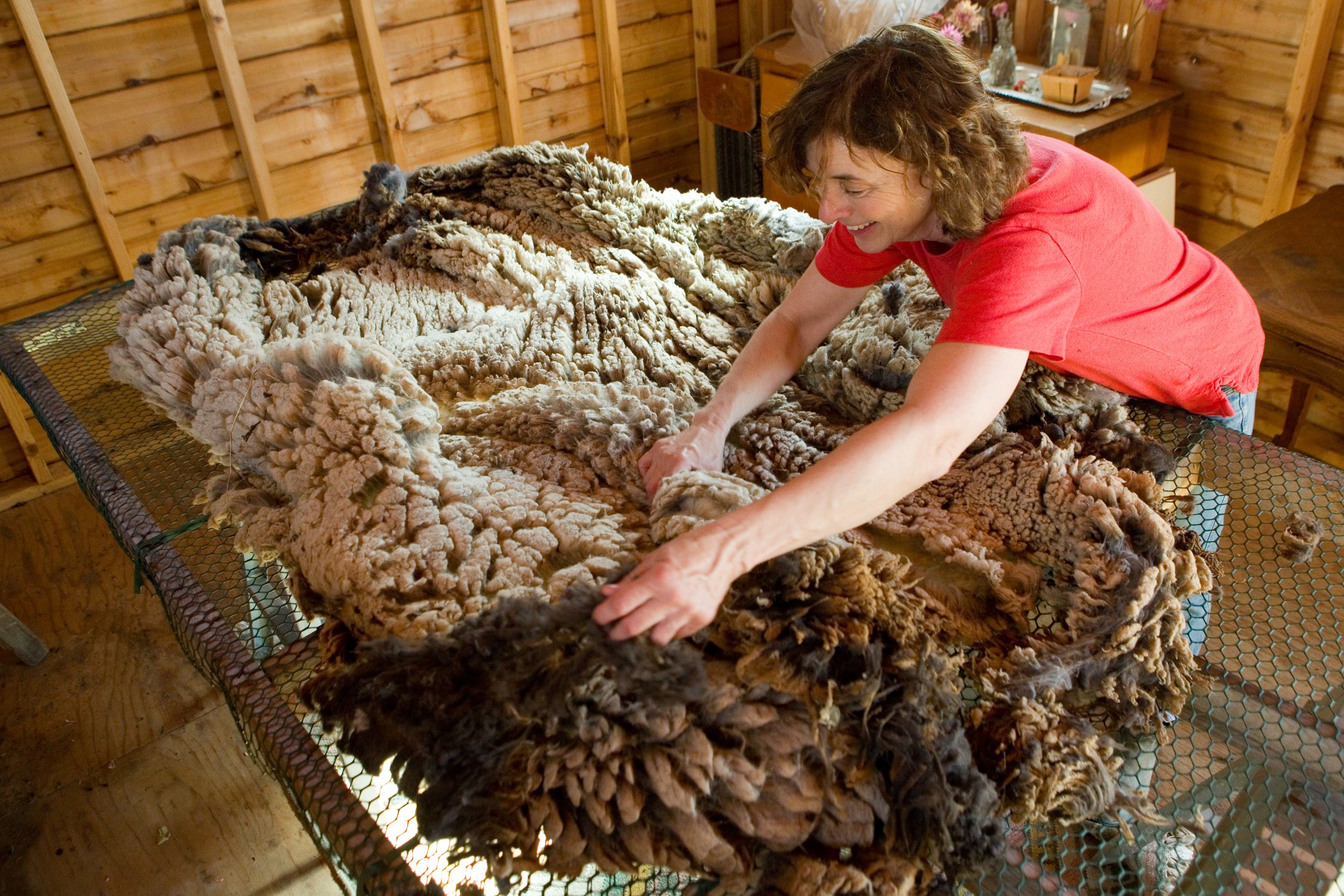shearing day
Local Fiber Beginnings: Community, Skill, & Care for Animals
Article & Photography by Margie O'Loughlin
When shearing day comes, every animal in the flock is on alert. Being prey animals, they know that something is different today, something is happening.
Saturday, March 18th dawned cold at Harvest Hill Acres in Dennison, MN. The thermometer said 13 degrees; the wind chill was -5 degrees, and snow was still piled high. Inside the barn, half a dozen well-bundled friends and family members came to help farmers Diana and Dean Treangen. The couple own 100+ purebred CMV Romeldales, and today is the first of their three scheduled shearing days.
CMV Romeldale is an American fine wool breed listed as threatened by the Livestock Conservancy. These sheep are prized for the softness of their wool, and their striking variations in color from white to brown to black. Theirs is a heritage breed, one of many that were widespread before industrial agriculture became the norm. Their numbers nose-dived years ago, when petroleum-based synthetic fibers began replacing wool in many clothing and textile markets.
Fiber artists and everyday people are rediscovering the joy of working with heritage breed wool, but first you have to get it off the animal.
To prepare for shearing day, the flock at Harvest Hill Acres was divided into thirds. First to be sheared were the pregnant ewes and yearling females. All were put in the barn a few days earlier, so they’d be dry on shearing day. Standing together in the gathering pen, their curiosity was obvious.
Feed (hay and grain) was withheld for 12 hours before shearing. Because sheep are ruminants and have four stomachs, there is the potential for discomfort if shearing is done on a too-full belly.
Certified shearer Marcus Irrthum arrived and set up his equipment. This included a portable ¼ horse power motor and an electric hand piece with cutter and comb. All equipment was disinfected prior to use to prevent the spread of disease.
Marcus, from Wannamingo, MN, is a sought after shearer who will spend next year in New Zealand, Australia, and Europe, working with other shearing professionals and entering competitions.
He pointed out that the inventor of the hand piece, an Aboriginal Australian named David Unaipon, patented an early version of the cutter in 1909. His invention provided so much economic benefit to the Australian wool industry that Unaipon’s face is still on the country’s $50 bill.
A shearer usually has a piece of plywood or a raised wooden floor to work on. They wear special shoes too, as wool is rich in lanolin and can make floor surfaces slippery. It’s the farmer’s job to make sure there is adequate lighting and headroom for the shearer to work safely.
After stretching to avoid injury, Marcus removed his jacket, hat and gloves. He would soon be working up a sweat in the cold morning air.
The first sheep was released from the gathering pen, and spun onto its rump: one of six positions used in sheep shearing. The sheep’s shoulders were held steady between Marcus’s knees.
Being a quality shearer means having fast, clean technique, solid footwork, a secure hold on the animal, and a sense of calm. The whirl wind shearing dance lasts only about four minutes from beginning to end.
CMV Romeldale wool is a fine fiber with long fleece length of 3”-6”. Longer fibers produce higher quality yarn, and a full fleece can weigh as much as 12 pounds. The wool has next-to-skin softness, comes in a variety of natural colors, and has a well-defined crimp. When shearing, the shearer is basically unzipping a sweater from the sheep in a series of prescribed cuts.
On April 13th, just three and a half weeks later, the temperature was a startling 86 degrees at Holly Ridge Farm in Ellsworth, WI. Among other heritage breeds, Patti and Rick Dougherty raise Leicester Longwool sheep, whose fleece is prized by hand spinners for its curl and luster.
Their Cormo and CVM Romeldale sheep sport a simple canvas overcoat to help keep their wool clean though the season. As each animal leaves the gathering pen to be sheared, its coat is removed.
Certified shearer Doug Rathke, of Hutchinson, MN, traveled to Holly Ridge Farm for shearing day. He has been shearing sheep since 1979. He currently holds the world record for the most sheep sheared in a 24 hour period (607!), and is skilled with both electric and hand blades.
Doug works primarily in the Midwest, but has sheared in New Zealand, Canada, Ireland, Wales, England, Norway, France, Australia, Kyrgyzstan and Kazakhstan.
Farmers monitor the health of their flock on shearing day, checking that body condition is good, appetite is normal, often giving annual vaccines and trimming hooves.
The wool handler is the person responsible for gathering up the fleeces. They gather wool quickly to make way for the next animal. Once a fleece lands on the floor, the farmer gets to see and feel it for the first time.
During skirting (which means cleaning), cap and belly wool are removed from good wool, and the whole fleece can be checked over before being weighed and recorded.
There are as many ways of storing fleeces as there farmers but, whatever the process, the surroundings must be clean and dry.
At Cannon River Fiber Farm in Northfield, MN, owners Julie Johnson and Tim Gallagher raise baby alpacas and angora goats for fiber that is prized for its softness. Their angora goats were penned overnight to prepare them for shearing on April 15th, a day that promised rain.
Julie and Tim worked in partnership with local shearer Jim Peterson, with Tim trimming hooves and Julie pre-skirting wool on the shearing floor. Julie will compost the wool that isn’t usable, and store the good wool in plastic bags until she can wash it herself. From the day's shearing, she will eventually have angora fleece, yarn, and roving to sell. The long, lustrous fiber produced by Angora goats is called mohair.
Wool sheep need shearing. They don’t have the continuous growing and shedding cycles of many other animals. The fleece that keeps a sheep warm in winter becomes uncomfortably hot in summer, tangled and dirty, holding burrs, manure, and other detritus from the pasture or barn. The sheep can see better after shearing, and lambs have an easier time finding a teat to suckle.
Farmer Diana Treangen holds an armful of yarn made from her own heritage breed sheep, which she sells on-site at Harvest Hill Acres Farm. All of the farmers featured in this article are working to increase the numbers of heritage breed goats, sheep, and alpacas. Shearing is essential to keep their flocks healthy.
Three Rivers Fibershed 2023
Funded by a Fibershed microgrant
